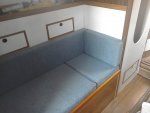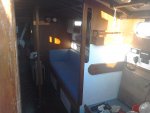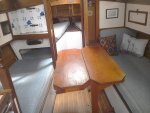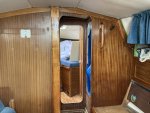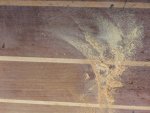Wandering Star
Well-known member
I recentlly bought an older neglected boat which had had water above the sole for quite a while. Now dried out, the cabin sole and sides of the interior woodwork in the main cabin (saloon) are heavily stained and darkened to the extent of the water ingress level above the sole - about 4”. I think the wood is solid teak but I might be wrong. Despite the staining the wood seems solid and the boat is of GRP construction, a Rival 32.
Am I too optimistic to believe I can restore the darkened wood to a nice bright finish to match the rest of the undamaged wood by bleaching wth Oxalic acid? How do I thicken the acid solution so it sticks to the wood whilst it performs it’s magic rather than just running into the bilge? is there a better method of restoring the darkened wood’
Would it be more sensible to use veneer glued over the damaged wood instead of wasting my time trying to get rid of the staining? How difficult is it to apply veneer?
Any other suggestions? The boat in question isn’t arriving until Thursday so I can’t take any pictures specifically of the staining until it arrives, but (if I can manage it) I am posting a general picture of the saloon area which if you study it carefully should show, not very clearly, what I’m talking about. Don’t concern yourself with the state of the cabin, she’s been completely neglected for 10 years and I know she’s in a mess! The challenge is bringing her back to her former good condition.
just to add - if anyone can identify the type of wood correctly, you get a bonus point.
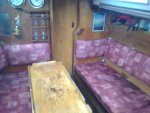
Am I too optimistic to believe I can restore the darkened wood to a nice bright finish to match the rest of the undamaged wood by bleaching wth Oxalic acid? How do I thicken the acid solution so it sticks to the wood whilst it performs it’s magic rather than just running into the bilge? is there a better method of restoring the darkened wood’
Would it be more sensible to use veneer glued over the damaged wood instead of wasting my time trying to get rid of the staining? How difficult is it to apply veneer?
Any other suggestions? The boat in question isn’t arriving until Thursday so I can’t take any pictures specifically of the staining until it arrives, but (if I can manage it) I am posting a general picture of the saloon area which if you study it carefully should show, not very clearly, what I’m talking about. Don’t concern yourself with the state of the cabin, she’s been completely neglected for 10 years and I know she’s in a mess! The challenge is bringing her back to her former good condition.
just to add - if anyone can identify the type of wood correctly, you get a bonus point.


 Laying Up 2011 038
Laying Up 2011 038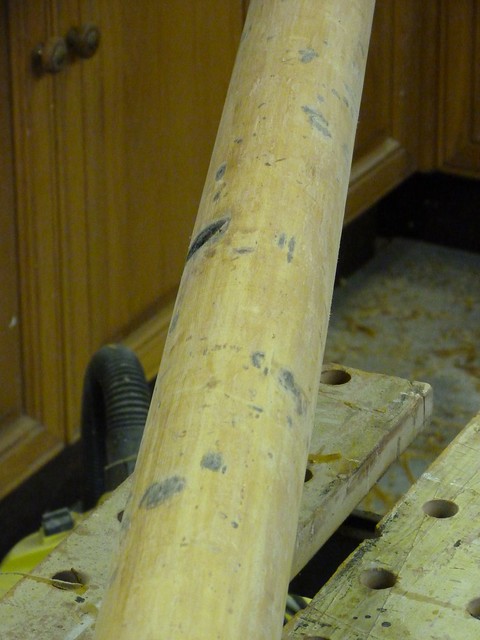 Laying Up 2011 040
Laying Up 2011 040 Misc 2011 048
Misc 2011 048